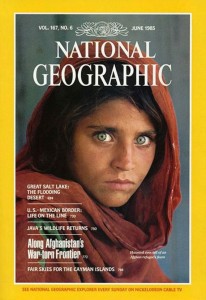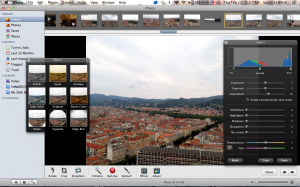Chapter 6: “Journalism Next” by Mark Briggs
February 23, 2012
You hear time and time again that a photograph taken in the right place at the right time can tell a story that words cannot express. I think what makes images so powerful is their power to stay in your head. We’ve all read great articles and books but you don’t have a mental image of a page in your head. Photos on the other hand can stay in your head forever.
I wasn’t even born when this photo was taken and then printed as the cover of National Geographic in 1985.
But it’s still one of my favorite photos and an iconic cover/photo. I think using this as an example, a photo taken 17 years ago is a testament to how powerful photos can be.
So not anyone can take a photo that phenomenal but everyone can take a photo! In the this chapter, Briggs discusses the ins and outs of photography–how to take photos, the importance of them and some nice tips. He first goes over the difference between DSLR cameras and a nice point and shoot, which most of us probably have. When I went overseas in the summer, I bought a brand new Sony point and shoot camera and it took phenomenal pictures that had so many options and features that I never even figured out. My point is you don’t need to by a $1000 DSLR to take a good photo!
I’ve also used my phone to take great photos–my first smartphone was a Droid Incredible and it had an 8-megapixel camera in it, not bad, also what my phone has now. I don’t think phones without cameras are even made anymore so chances are if you have a mobile phone, you have a camera.
What else is really cool about most computers these days is that they come with some kind of photography program or application already installed! Look at some of the options with iPhoto:
Briggs writes a lot about editing and organizing your photos. There’s a lot you can and this is just with a free program that came with my laptop. Programs like Photoshop and Aperture are all available (but more expensive) but have endless features. And you can easily teach yourself to use them if you’re dedicated and interested enough.
Posting your photos are online are also very easy. Sites like Flickr, Kodak Gallery, Snapfish, Shutterfly and Photobucket are just a handful of photosharing websites you can post your photos to.
Briggs covers the basics in detail so this is a great chapter if you’re interested in photography as a journalist, great read!

